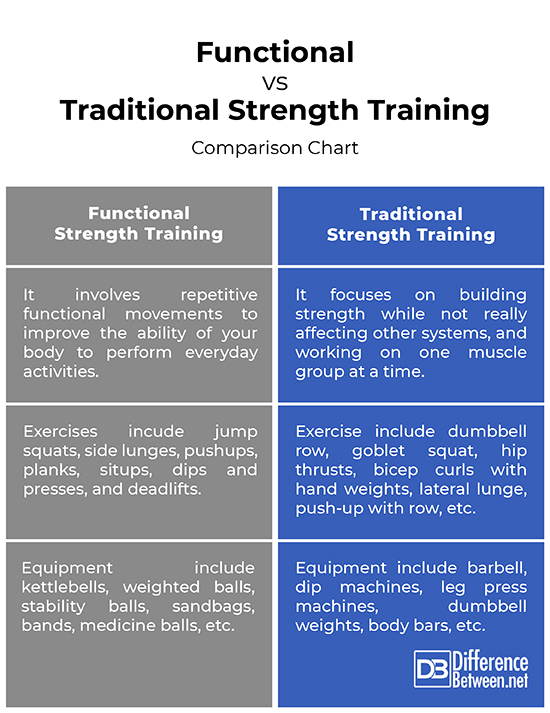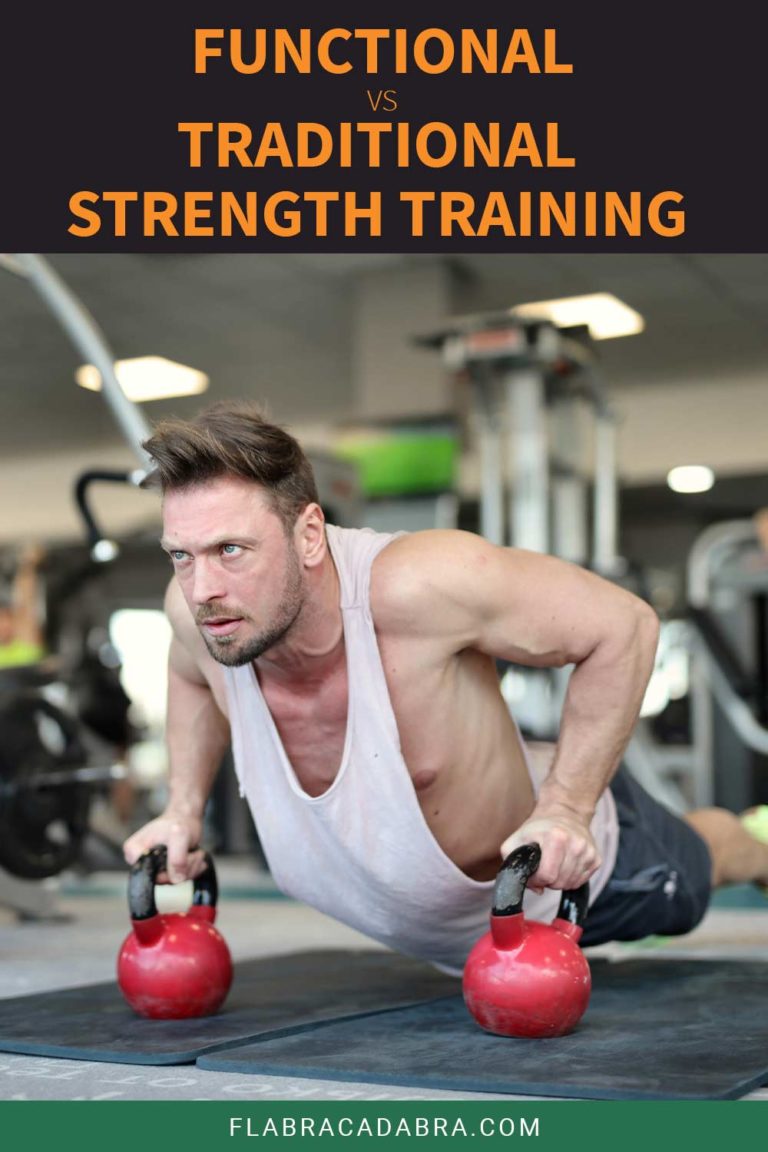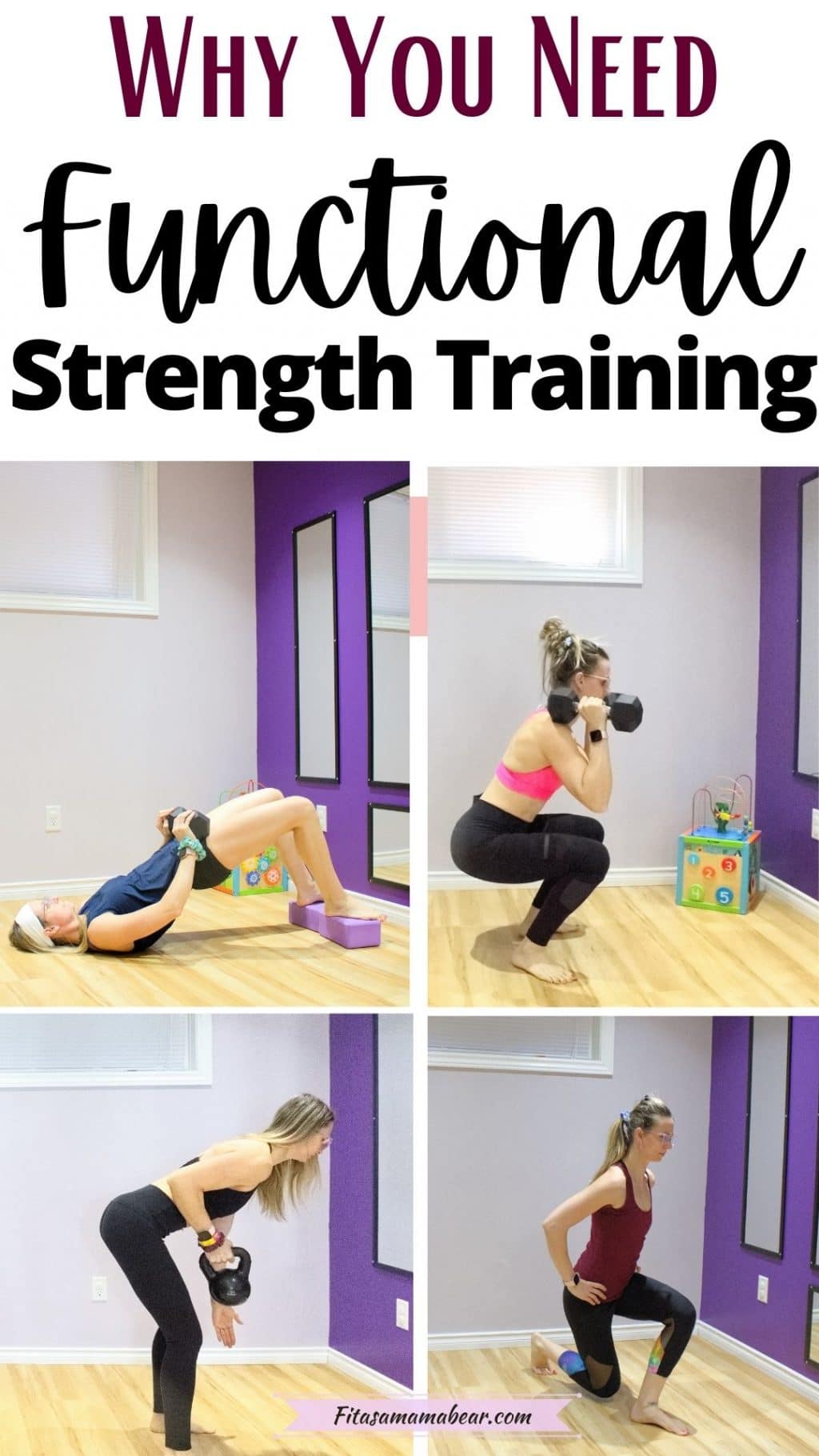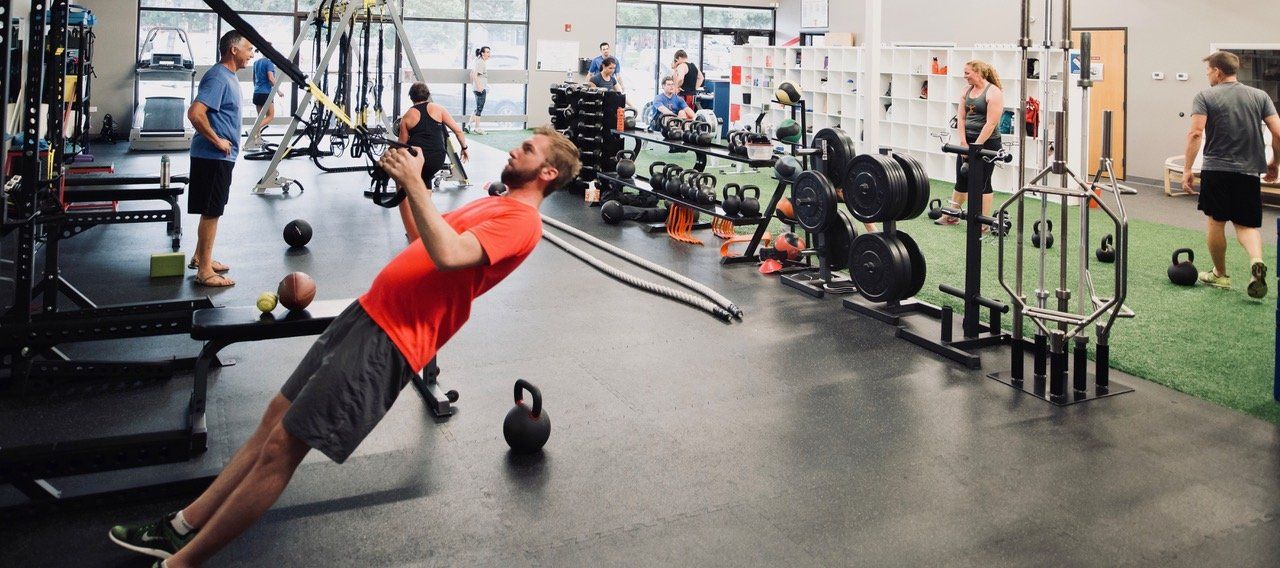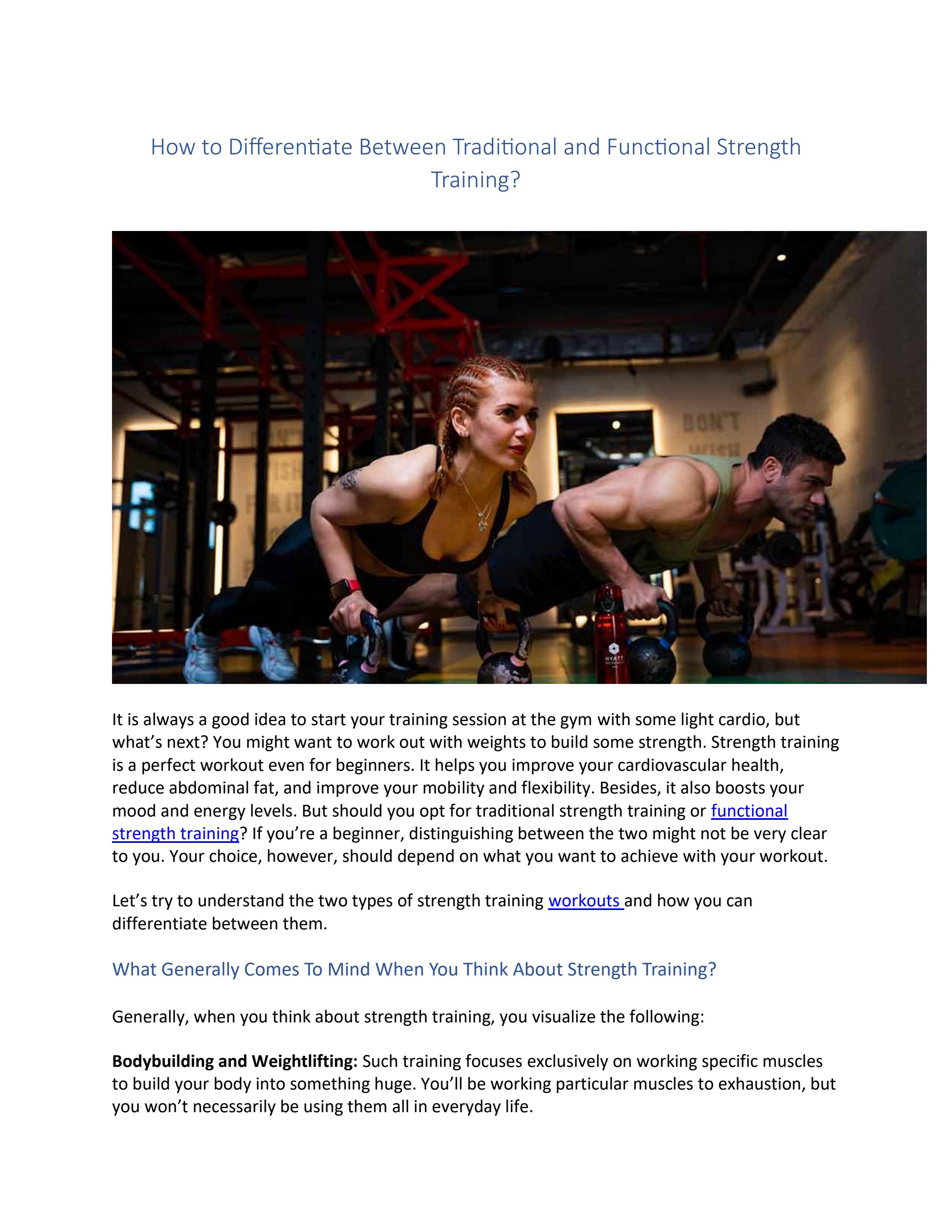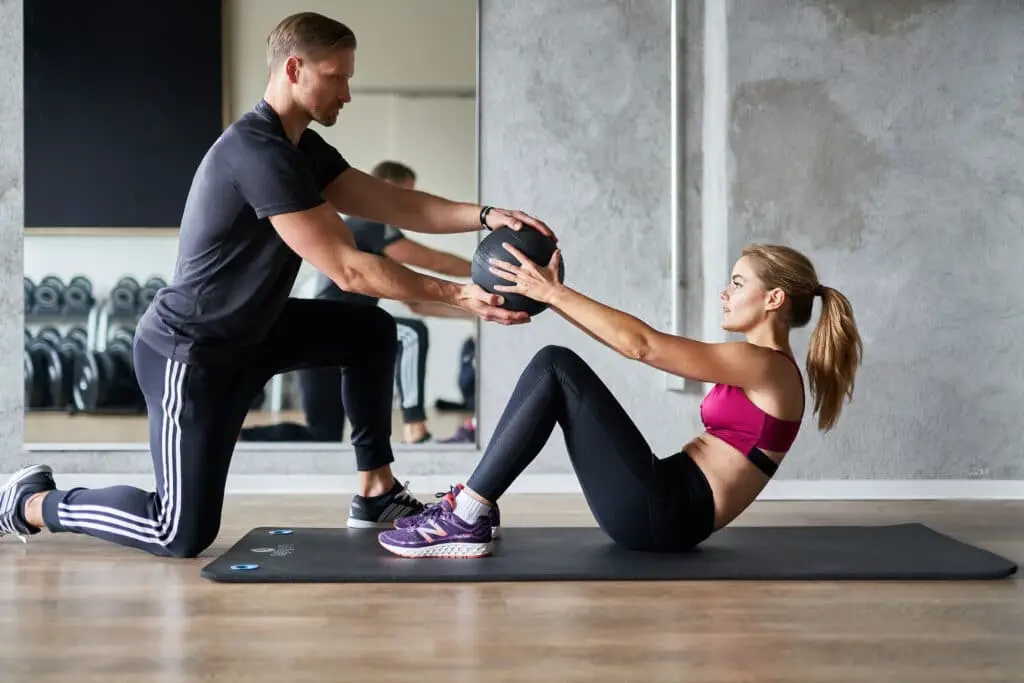Difference Between Traditional And Functional Strength Training

Confused about your workout? The age-old debate between traditional and functional strength training is raging, and understanding the difference is crucial for optimizing your fitness goals.
This article breaks down the core distinctions between these two approaches, helping you determine which is the better fit for your individual needs and lifestyle. We'll explore the methodologies, benefits, and potential drawbacks of each, providing a clear and concise guide to informed training.
Traditional Strength Training: Isolation and Power
Traditional strength training, often associated with bodybuilding and powerlifting, focuses on isolating specific muscle groups using machines and free weights. Exercises like bicep curls, bench presses, and squats are staples.
The primary goal is to increase muscle size (hypertrophy) and maximal strength. Studies in the Journal of Strength and Conditioning Research consistently demonstrate the effectiveness of traditional methods for building raw power (J Strength Cond Res. 2009 Dec;23(9):2521-32).
Key Characteristics:
Isolation exercises target specific muscles, maximizing their growth and strength potential.
Structured programs follow set routines and progressive overload, gradually increasing weight and repetitions.
Machines and free weights are the primary tools, offering controlled movements and resistance.
Functional Strength Training: Real-World Application
Functional strength training emphasizes movements that mimic everyday activities. This approach aims to improve strength, balance, and coordination for real-world tasks.
Exercises like squats, lunges, push-ups, and rows are performed using bodyweight, resistance bands, kettlebells, and dumbbells. The focus is on multi-joint movements that engage multiple muscle groups simultaneously.
Key Characteristics:
Multi-joint exercises recruit several muscles, enhancing overall strength and coordination.
Emphasis on core stability improves balance and posture.
Varied equipment including bodyweight, resistance bands, and free weights, simulates real-life movements.
The Crucial Differences: A Side-by-Side Comparison
While both approaches build strength, their objectives differ significantly. Traditional training builds maximal strength in isolated muscles, while functional training enhances strength for everyday activities.
For example, a powerlifter might excel at bench pressing heavy weight, demonstrating significant chest and tricep strength. However, a person who engages in functional training might find it easier to lift heavy objects from the floor due to the core engagement and full-body coordination it trains.
Who Benefits From Each Approach?
Traditional training is ideal for bodybuilders, powerlifters, and athletes seeking maximum muscle size and strength. Individuals with specific aesthetic goals also benefit from this method.
Functional training is suitable for individuals looking to improve their overall fitness, daily function, and athletic performance in sports requiring dynamic movement. This is an excellent choice for those recovering from injuries, as well, improving stability and decreasing risk.
The Science Behind Functional Training's Effectiveness
Research in the European Journal of Applied Physiology supports functional training's benefits for improving balance and stability (Eur J Appl Physiol. 2016 Jan;116(1):103-17). Studies shows it also enhances proprioception, the body's ability to sense its position in space.
This enhanced awareness and control contribute to reduced risk of falls and injuries, particularly as we age. Functional movements transfer easily to activities like walking, running, lifting, and carrying.
Potential Drawbacks: Awareness is Key
Traditional training can lead to imbalances if not properly structured, potentially increasing risk of injury. Overemphasis on isolation exercises can neglect smaller stabilizing muscles that are critical for joint stability.
Functional training, while effective, requires proper form and technique to prevent injury. Beginners may need guidance from a qualified trainer to learn proper movement patterns.
Expert Opinions: Guidance and Integration
"The best approach is often a hybrid one," says Dr. Emily Carter, a certified strength and conditioning specialist. "Combining traditional exercises with functional movements provides a well-rounded approach to fitness, addressing both strength and functional abilities."
Adding traditional weightlifting exercises to a functional routine can assist with maximizing strength. In addition, adding functional movements to a traditional routine can build stabilization and overall mobility.
Next Steps: Choose Your Path
Consider your fitness goals, experience level, and any existing injuries. Consulting with a qualified trainer is highly recommended to develop a safe and effective training plan.
Whether you choose traditional, functional, or a combination of both, remember consistency and proper form are key to achieving your desired results. Stay informed, listen to your body, and adjust your training as needed.
